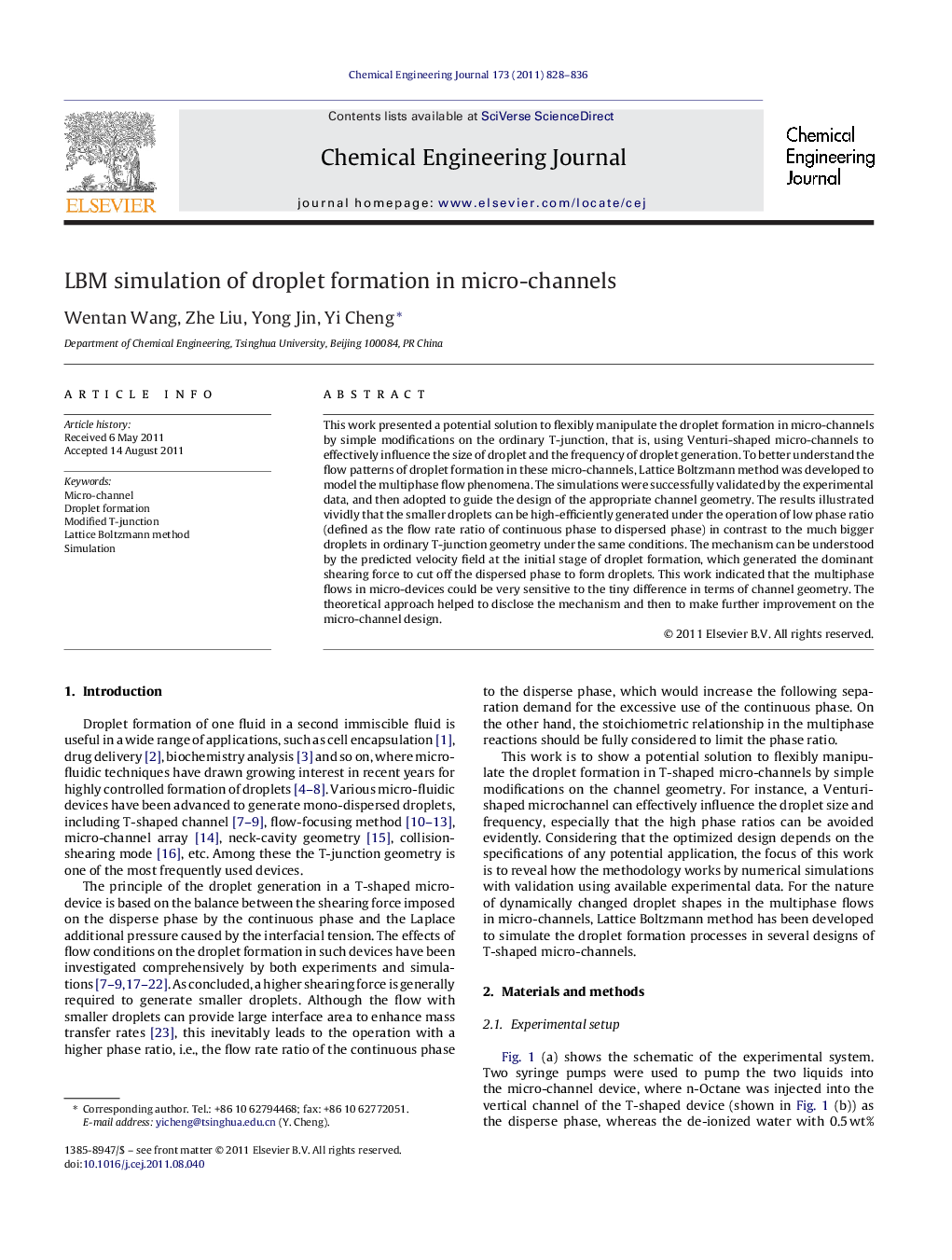| Article ID | Journal | Published Year | Pages | File Type |
|---|---|---|---|---|
| 150580 | Chemical Engineering Journal | 2011 | 9 Pages |
This work presented a potential solution to flexibly manipulate the droplet formation in micro-channels by simple modifications on the ordinary T-junction, that is, using Venturi-shaped micro-channels to effectively influence the size of droplet and the frequency of droplet generation. To better understand the flow patterns of droplet formation in these micro-channels, Lattice Boltzmann method was developed to model the multiphase flow phenomena. The simulations were successfully validated by the experimental data, and then adopted to guide the design of the appropriate channel geometry. The results illustrated vividly that the smaller droplets can be high-efficiently generated under the operation of low phase ratio (defined as the flow rate ratio of continuous phase to dispersed phase) in contrast to the much bigger droplets in ordinary T-junction geometry under the same conditions. The mechanism can be understood by the predicted velocity field at the initial stage of droplet formation, which generated the dominant shearing force to cut off the dispersed phase to form droplets. This work indicated that the multiphase flows in micro-devices could be very sensitive to the tiny difference in terms of channel geometry. The theoretical approach helped to disclose the mechanism and then to make further improvement on the micro-channel design.
► Proposed a potential solution to flexibly manipulate the droplet formation in micro-channels. ► Demonstrated high efficient generation of small droplets under low phase ratio. ► Revealed strong sensitivity of flow patterns in micro-devices to tiny difference in geometry. ► Developed 2D and 3D LBM models for droplet flow phenomena with experimental validation.
